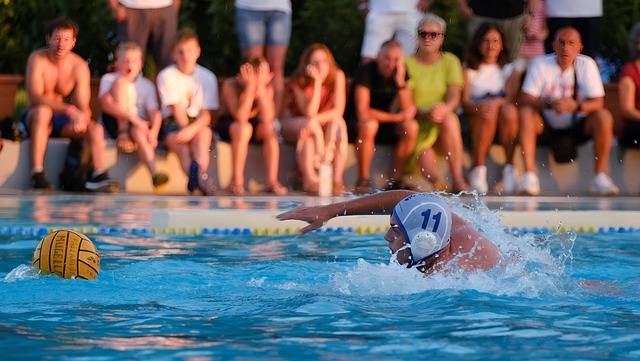If you’re new to water polo, you might be wondering what swim stroke is most commonly used to play defense. The answer is the eggbeater kick. This kick allows you to tread water vertically and keep your hands free to block shots or steal the ball from the opposing team.
The eggbeater kick is a unique swimming technique that is specific to water polo. It involves alternating circular motions with your legs to create a stable base in the water. This allows you to move side to side or up and down without losing your position.
Learning the eggbeater kick takes time and practice, but it’s an essential skill for any water polo player. Once you master this technique, you’ll be able to play defense effectively and help your team win games.
Water Polo Defense Techniques
Overview of Water Polo Defense Techniques
Playing defense in water polo requires a combination of physical strength, tactical awareness, and technical skill. The aim of water polo defense is to prevent the opposing team from scoring by blocking shots, intercepting passes, and disrupting the flow of play.
Water polo defense can be played in a variety of ways, depending on the situation and the strengths and weaknesses of the players involved.
Swim Strokes Used in Water Polo Defense
In water polo, the most commonly used swim stroke for defense is the eggbeater kick. The eggbeater kick allows players to maintain a stable position in the water while using their arms to block shots or intercept passes.
The eggbeater kick is a unique swimming technique that involves alternating circular movements of the legs to create a vertical lift. This technique is essential for water polo players to master, as it allows them to stay in position for extended periods while using their arms to defend.
Another swim stroke commonly used in water polo defense is the crawl stroke. The crawl stroke is used when players need to cover a lot of ground quickly, such as when chasing down an opponent or intercepting a pass. The crawl stroke is also useful when players need to swim away from the goal quickly to avoid a counter-attack.
Overall, water polo defense requires a combination of different skills and techniques, including physical strength, tactical awareness, and technical skill.
By mastering the eggbeater kick and other defensive techniques, players can become effective defenders and help their team win games.
Commonly Used Swim Strokes in Water Polo Defense
Freestyle or Front Crawl
The front crawl or freestyle is the most commonly used swim stroke in water polo defense. Players use this stroke to move horizontally in the water and quickly cover the distance between themselves and the opposing player. The front crawl also allows players to keep their head above water, making it easier to see the ball and other players.
When playing defense, it’s important to maintain a strong arm pull and kick to keep up with the opposing player. The front crawl also allows players to quickly change direction and move in any direction necessary to block the opposing player’s shot or pass.
Breaststroke
The breaststroke is another swim stroke that can be used in water polo defense. This stroke is slower than the front crawl but can be useful in situations where the player needs to move vertically in the water. The breaststroke can be used to block a shot or pass from an opposing player who is directly in front of the defensive player.
When using the breaststroke in water polo defense, it’s important to maintain a strong kick and arm pull to move through the water quickly. Players should also keep their head above water to stay aware of the ball and other players.
Backstroke
The backstroke is not commonly used in water polo defense, but it can be useful in certain situations. This stroke allows players to move backwards in the water while keeping their head above water to see the ball and other players.
The backstroke can be useful in situations where the offensive player is behind the defensive player and the defensive player needs to move backwards to block a shot or pass.
When using the backstroke in water polo defense, players should maintain a strong kick and arm pull to move through the water quickly. It’s also important to stay aware of the ball and other players to avoid collisions.
Butterfly Stroke
The butterfly stroke is not commonly used in water polo defense due to its high energy expenditure and slower speed compared to the front crawl.
However, it can be useful in certain situations where the player needs to move quickly through the water and change direction frequently.
When using the butterfly stroke in water polo defense, players should maintain a strong kick and arm pull to move through the water quickly. It’s important to stay aware of the ball and other players to avoid collisions.







